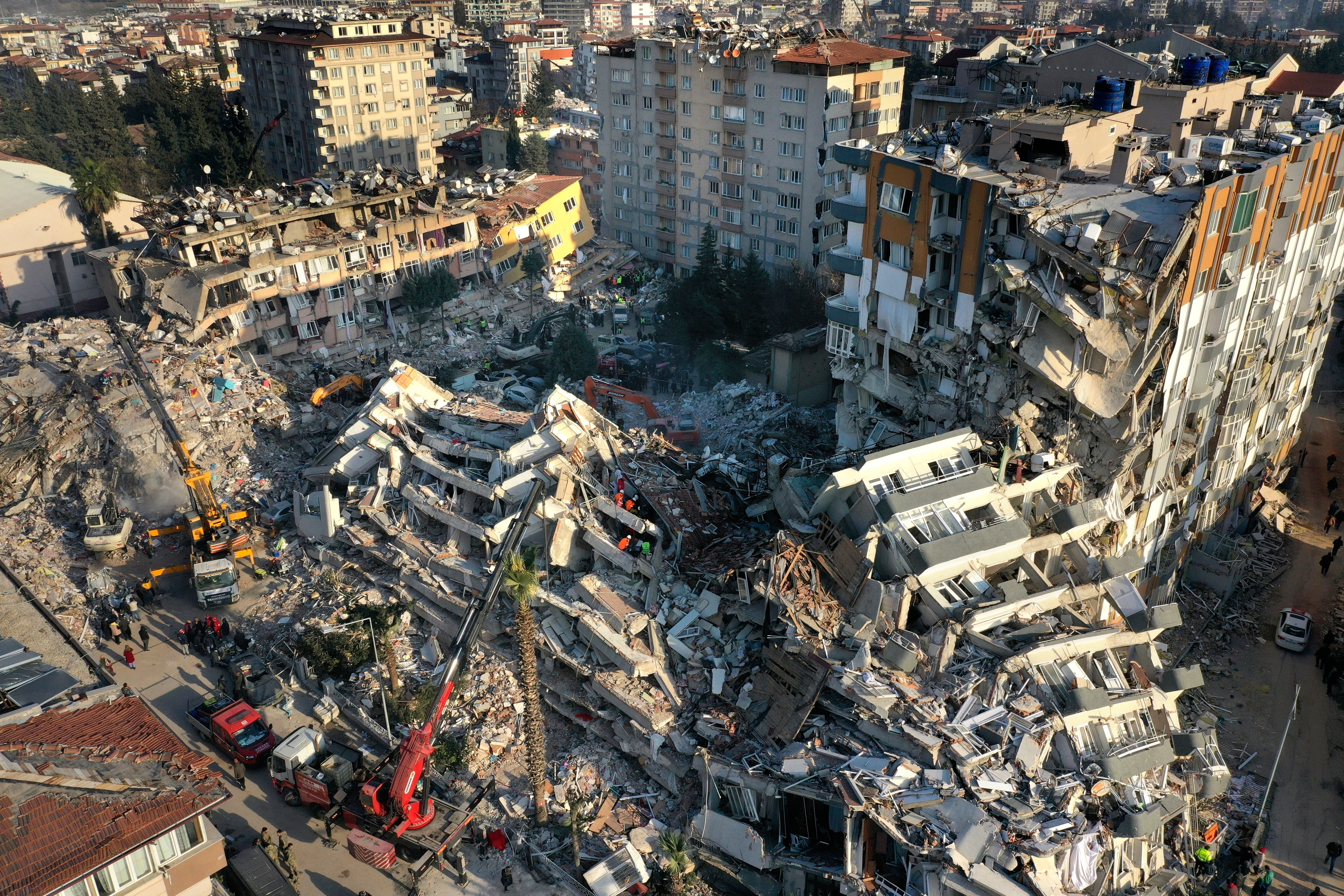Key developments in the aftermath of the Turkey, Syria quake
Turkey's disaster management agency says more than 6,000 aftershocks hit the disaster region in the days following the Feb. 6 earthquake

Your support helps us to tell the story
From reproductive rights to climate change to Big Tech, The Independent is on the ground when the story is developing. Whether it's investigating the financials of Elon Musk's pro-Trump PAC or producing our latest documentary, 'The A Word', which shines a light on the American women fighting for reproductive rights, we know how important it is to parse out the facts from the messaging.
At such a critical moment in US history, we need reporters on the ground. Your donation allows us to keep sending journalists to speak to both sides of the story.
The Independent is trusted by Americans across the entire political spectrum. And unlike many other quality news outlets, we choose not to lock Americans out of our reporting and analysis with paywalls. We believe quality journalism should be available to everyone, paid for by those who can afford it.
Your support makes all the difference.As the search and rescue effort for buried survivors of the Feb. 6 earthquake started to wind down in Turkey, demolition teams have moved in to clear the mounds of rubble left by the worst disaster in modern Turkish history.
Here’s a look at the key developments Sunday from the aftermath of the earthquake.
MORE THAN 6,000 AFTERSHOCKS HIT FOLLOWING QUAKE
Turkey’s disaster management said some 6,040 aftershocks hit the 11 provinces that form the disaster zone declared by the government in the days following the initial quake.
The initial quake was measured with a magnitude of 7.8, and was followed nine hours later by a 7,5 magnitude tremor.
Orhan Tatar, general manager of the agency, AFAD, said 40 aftershocks were of a 5 to 6 magnitude, while one was recorded at 6.6.
“It is extremely important to stay away from damaged buildings and not enter them,” he told a televised news briefing in Ankara.
He also warned of “secondary disasters” such as landslides and rockfalls.
INSPECTIONS FIND OVER 100,000 BADLY DAMAGED BUILDINGS
Some 105,794 buildings checked by Turkey's Environment and Urbanization Ministry are either destroyed or so badly damaged as to require demolition, the ministry said Sunday.
Of these, 20,662 had collapsed, the statement said. The damaged or destroyed buildings contained more than 384,500 units, mostly residential apartments.
The figures were for Turkey and did not cover collapsed and damaged buildings in neighboring Syria.
___